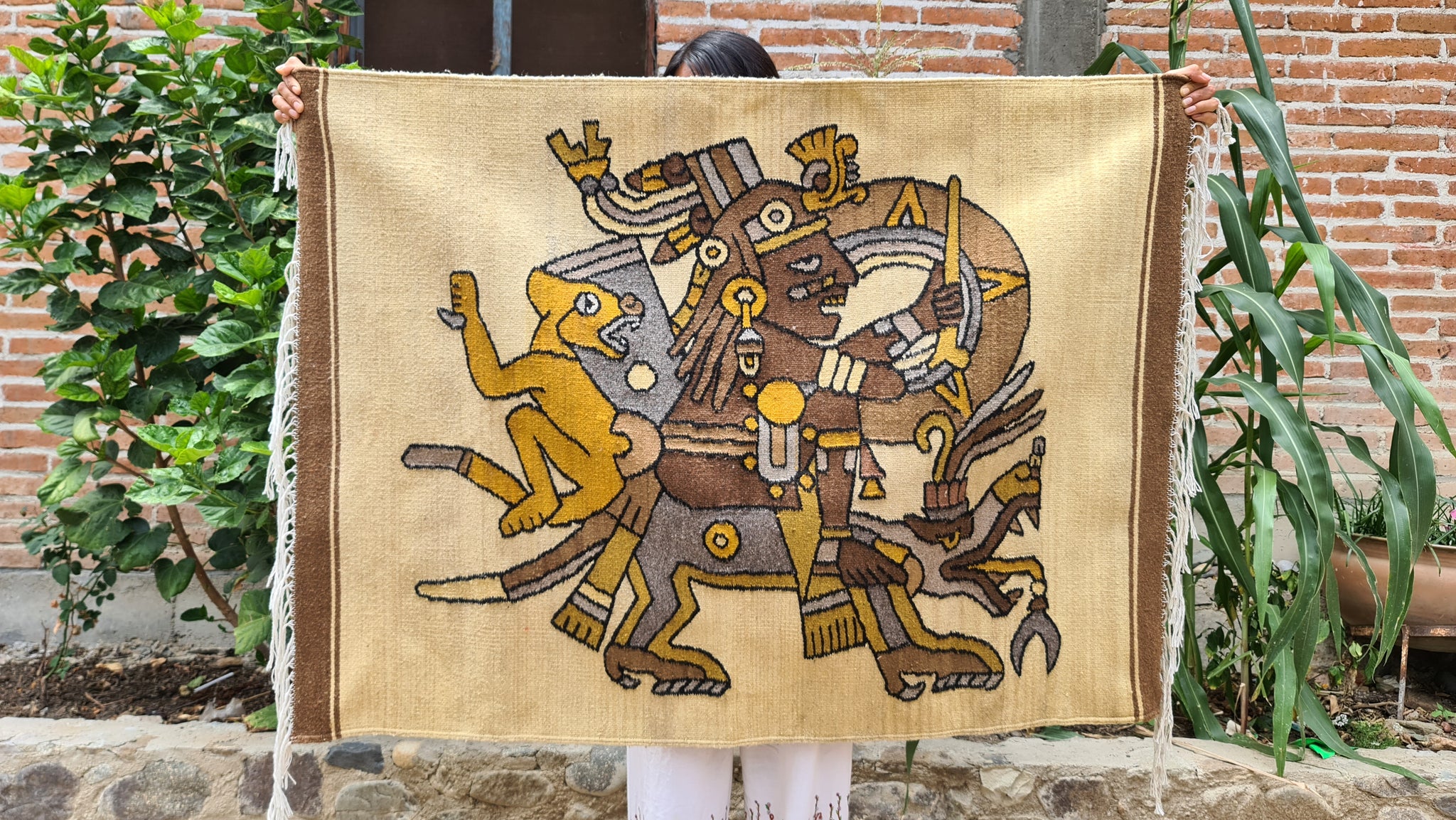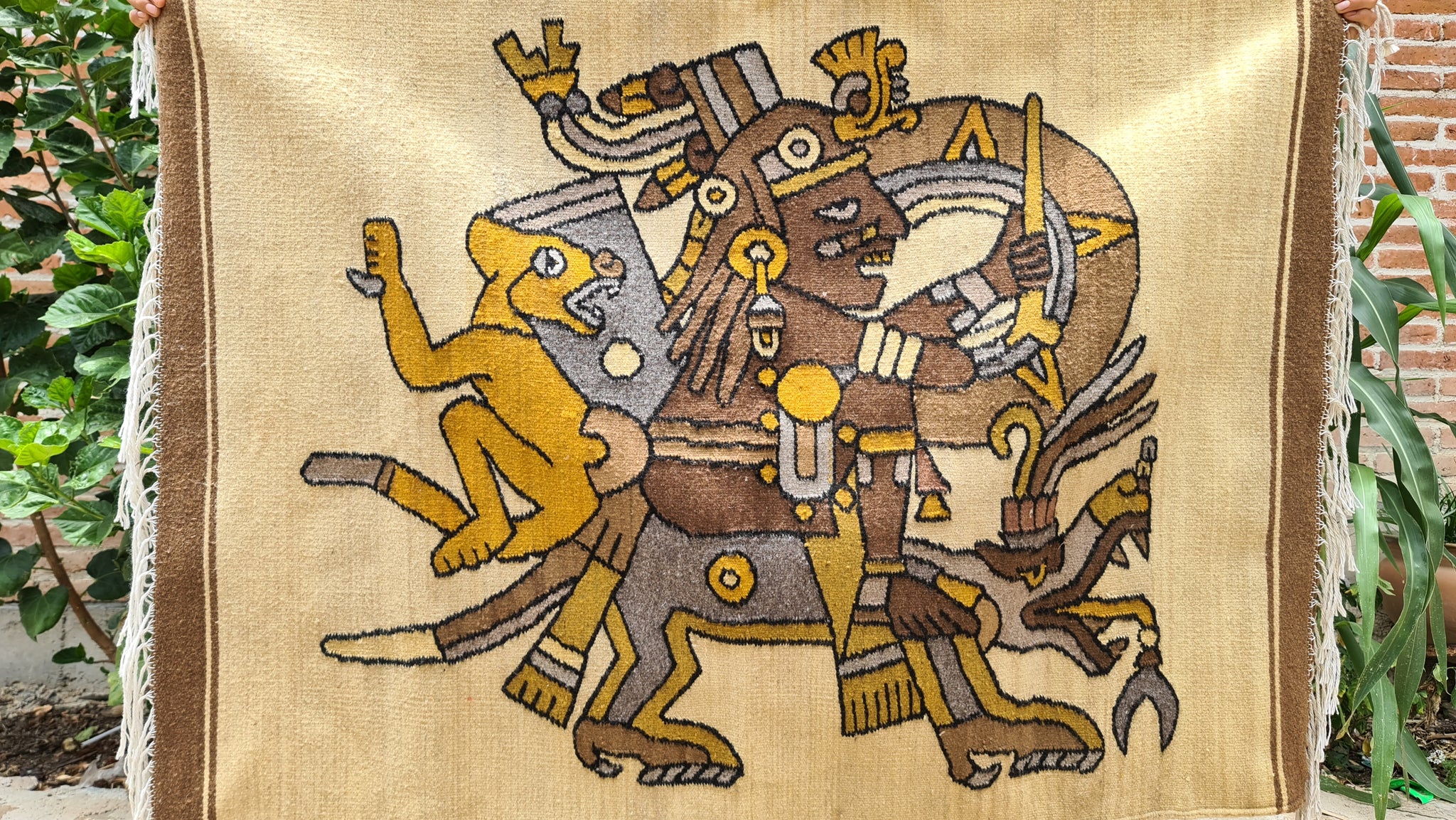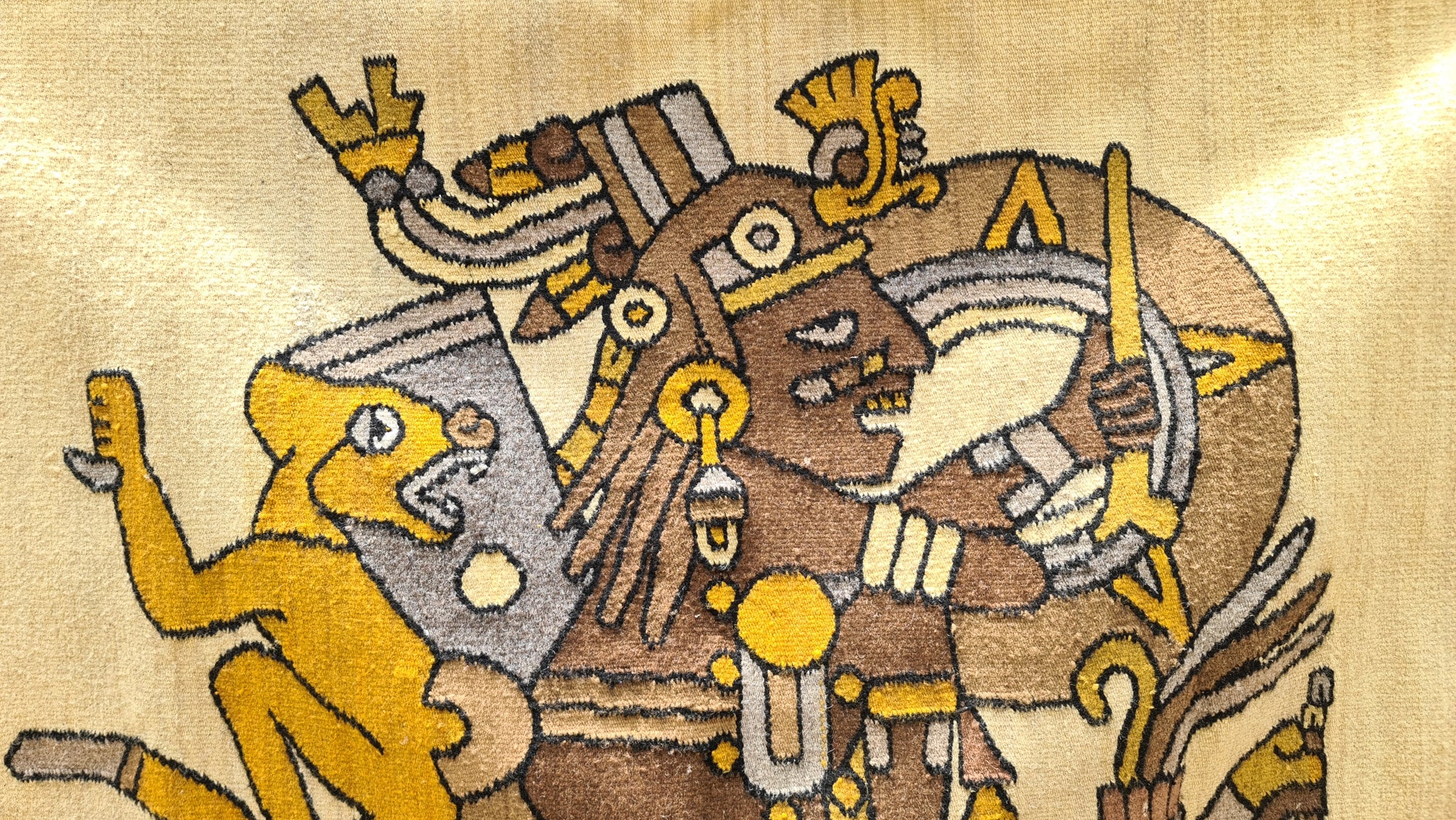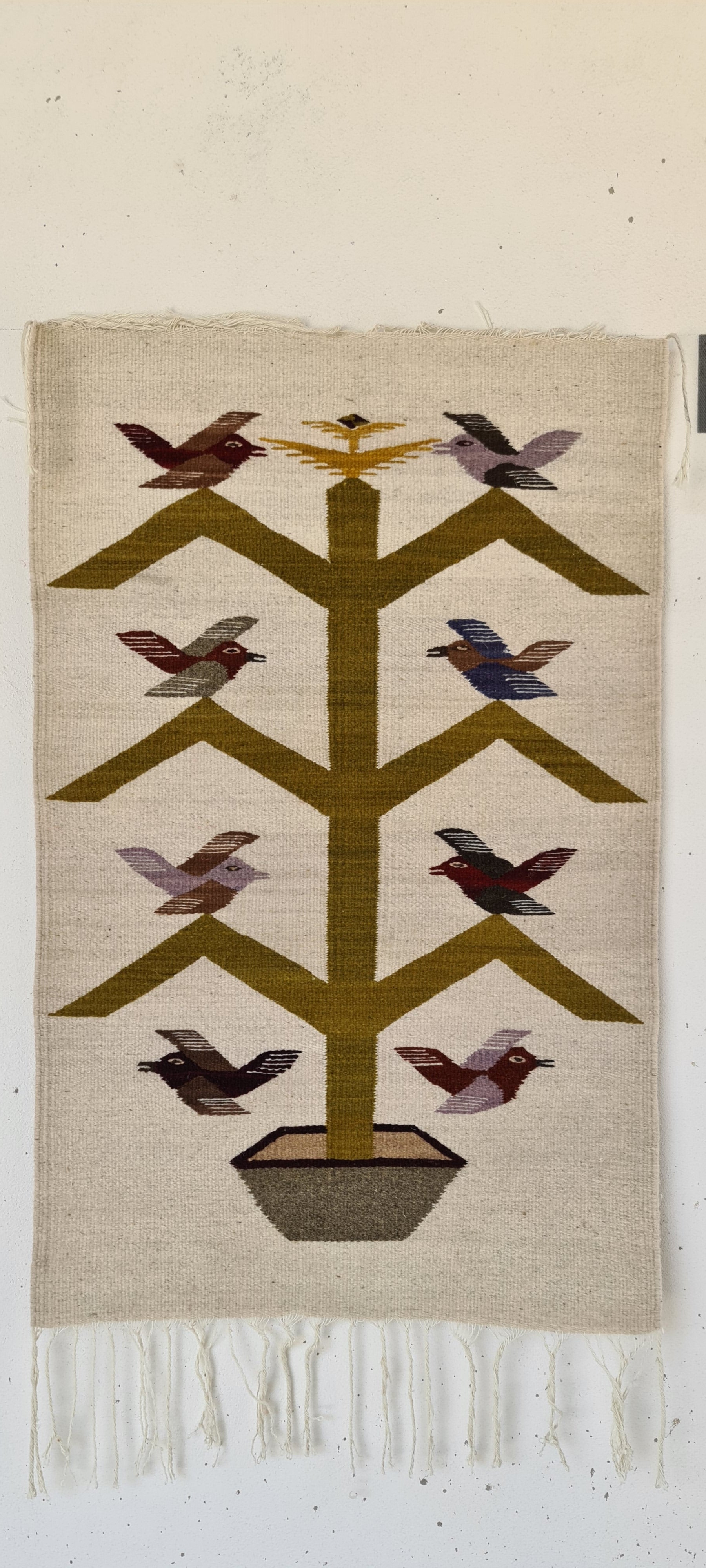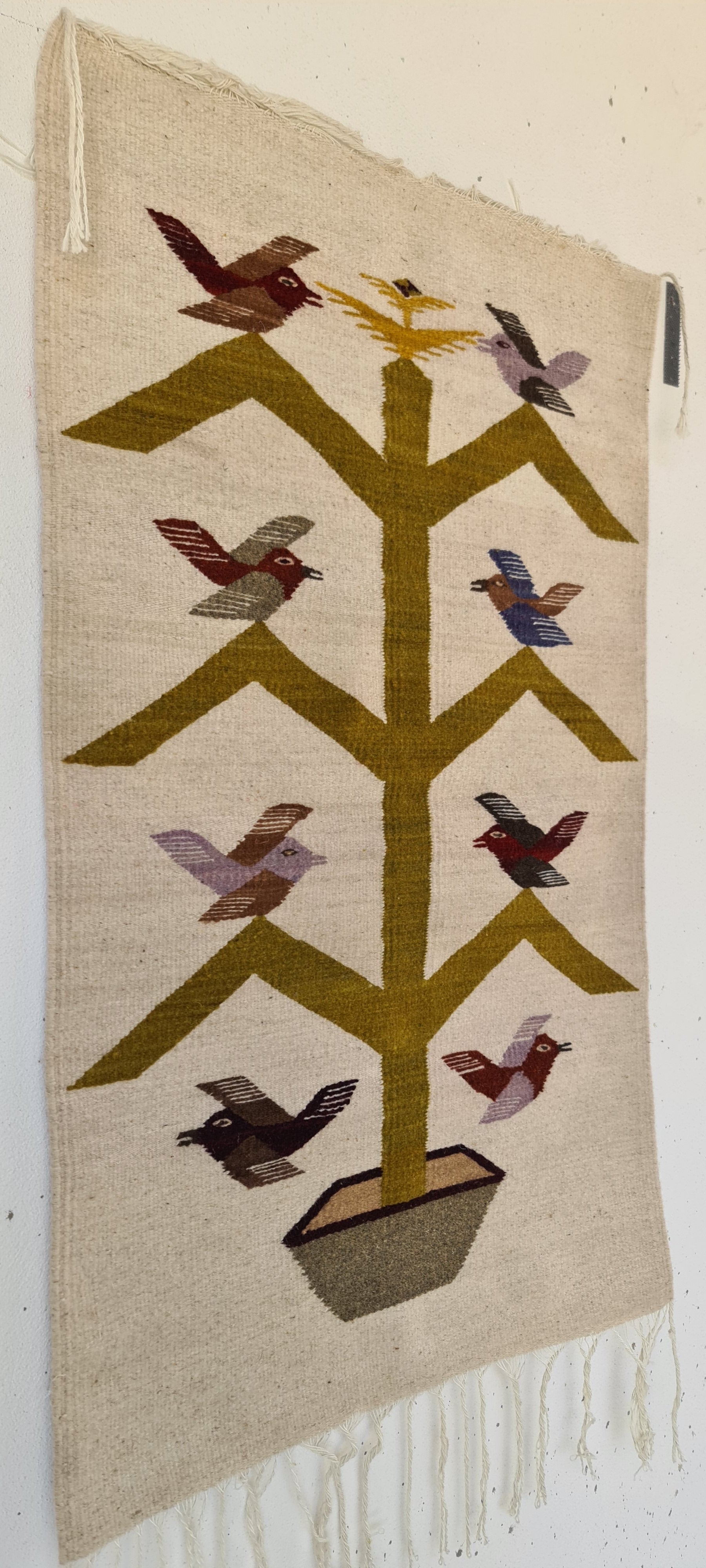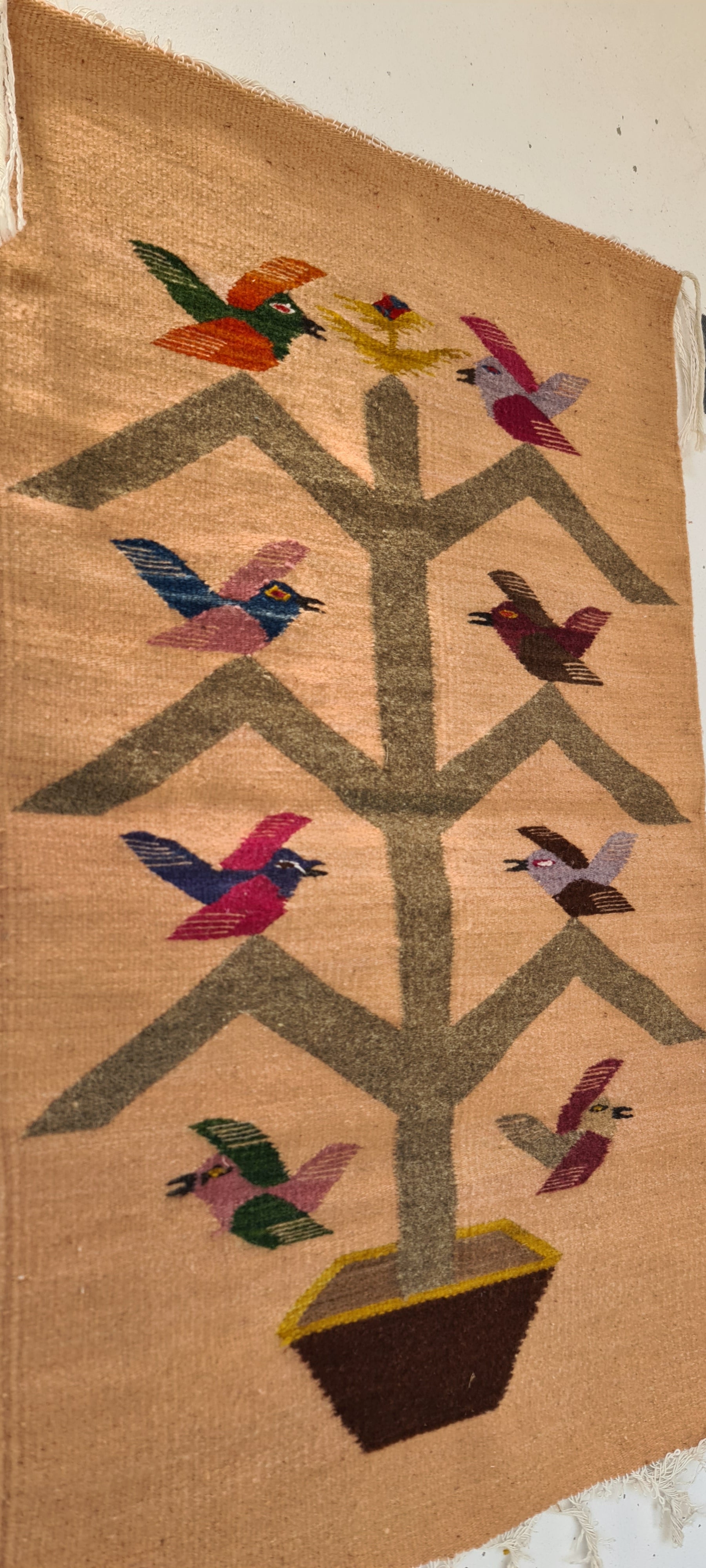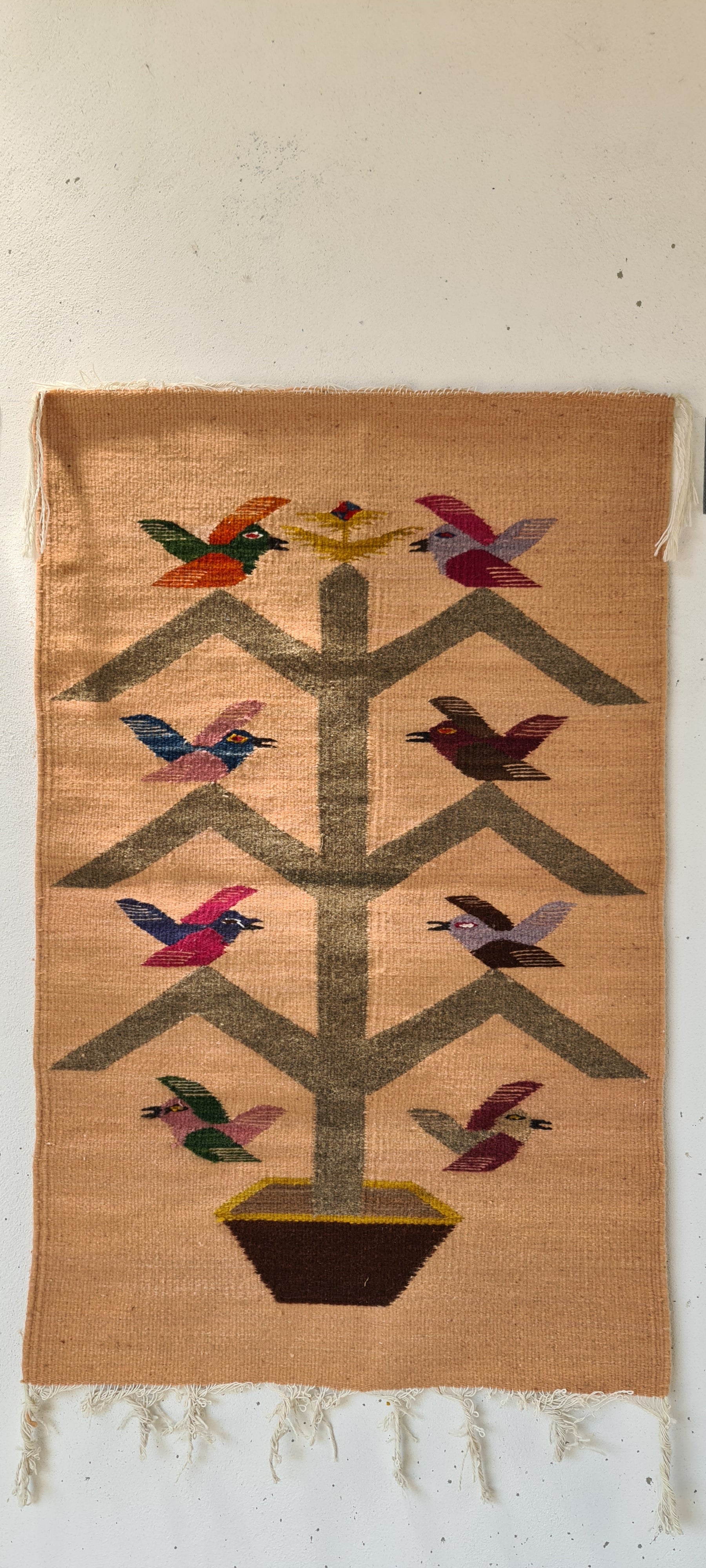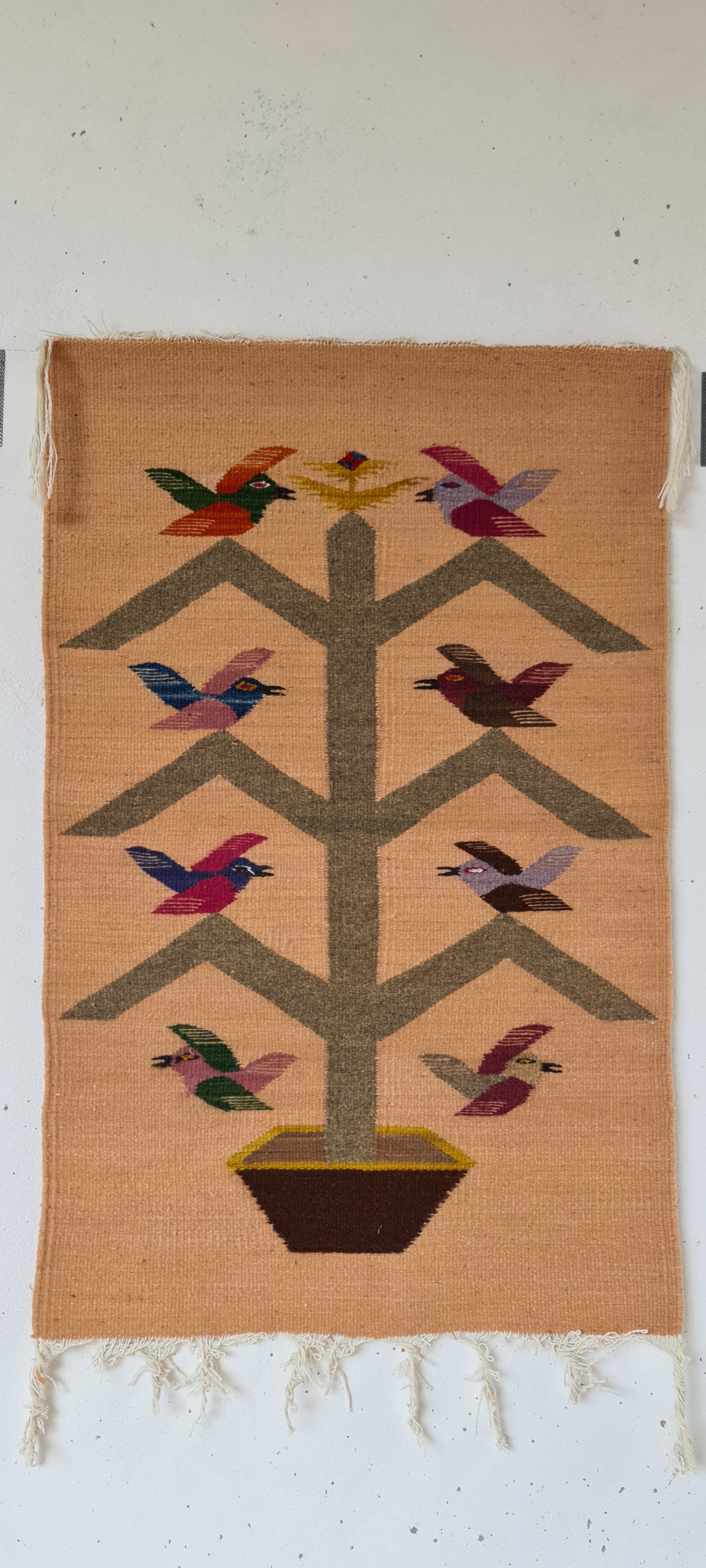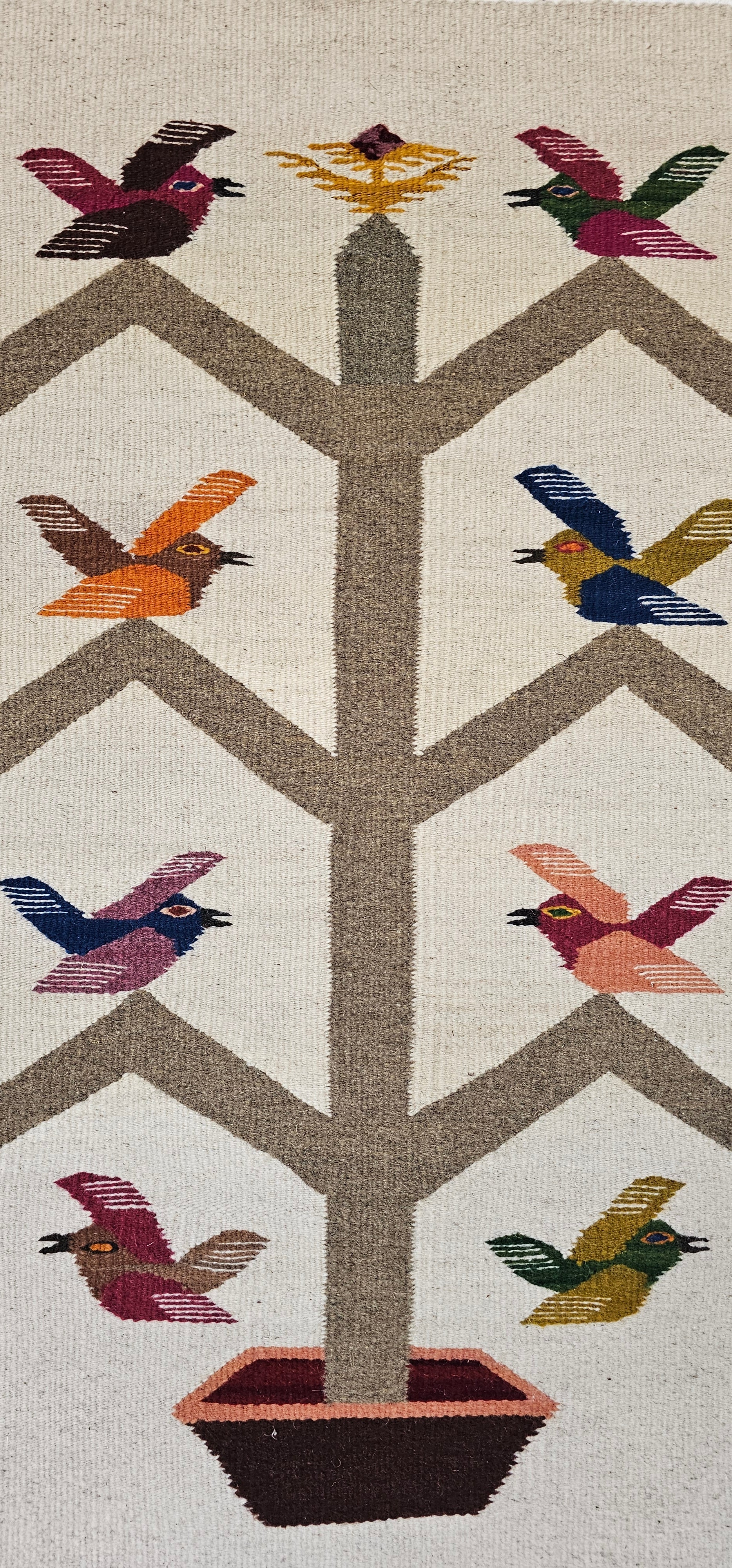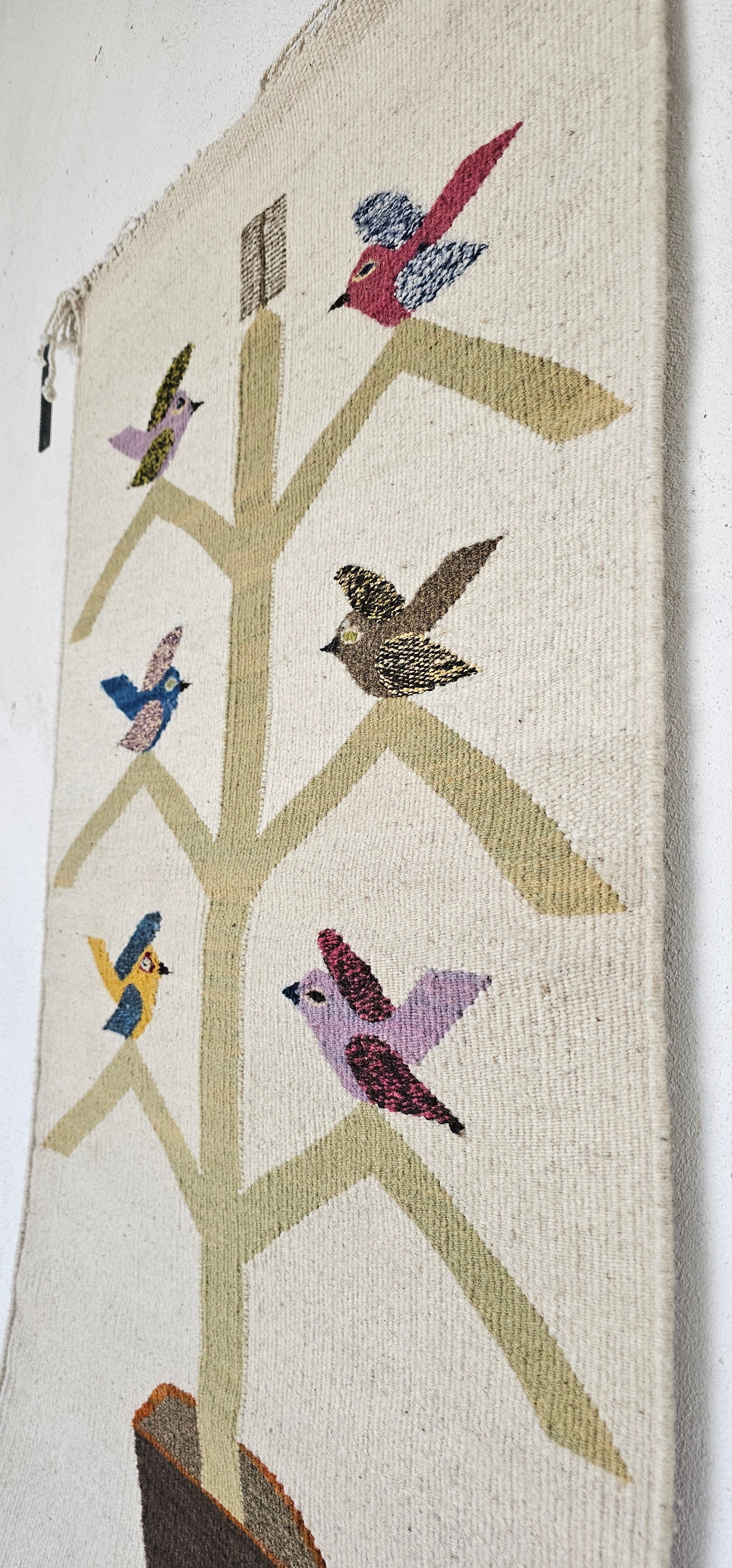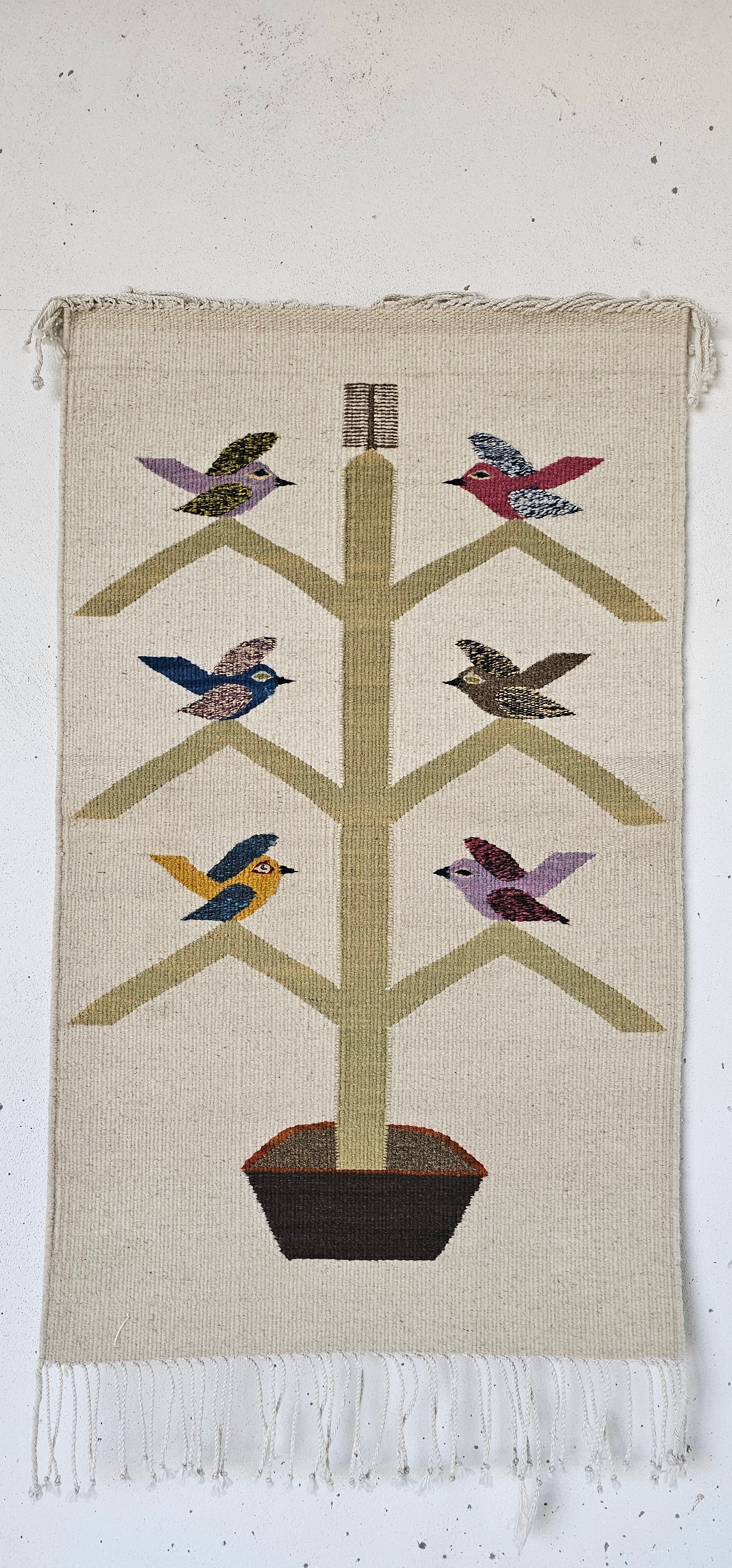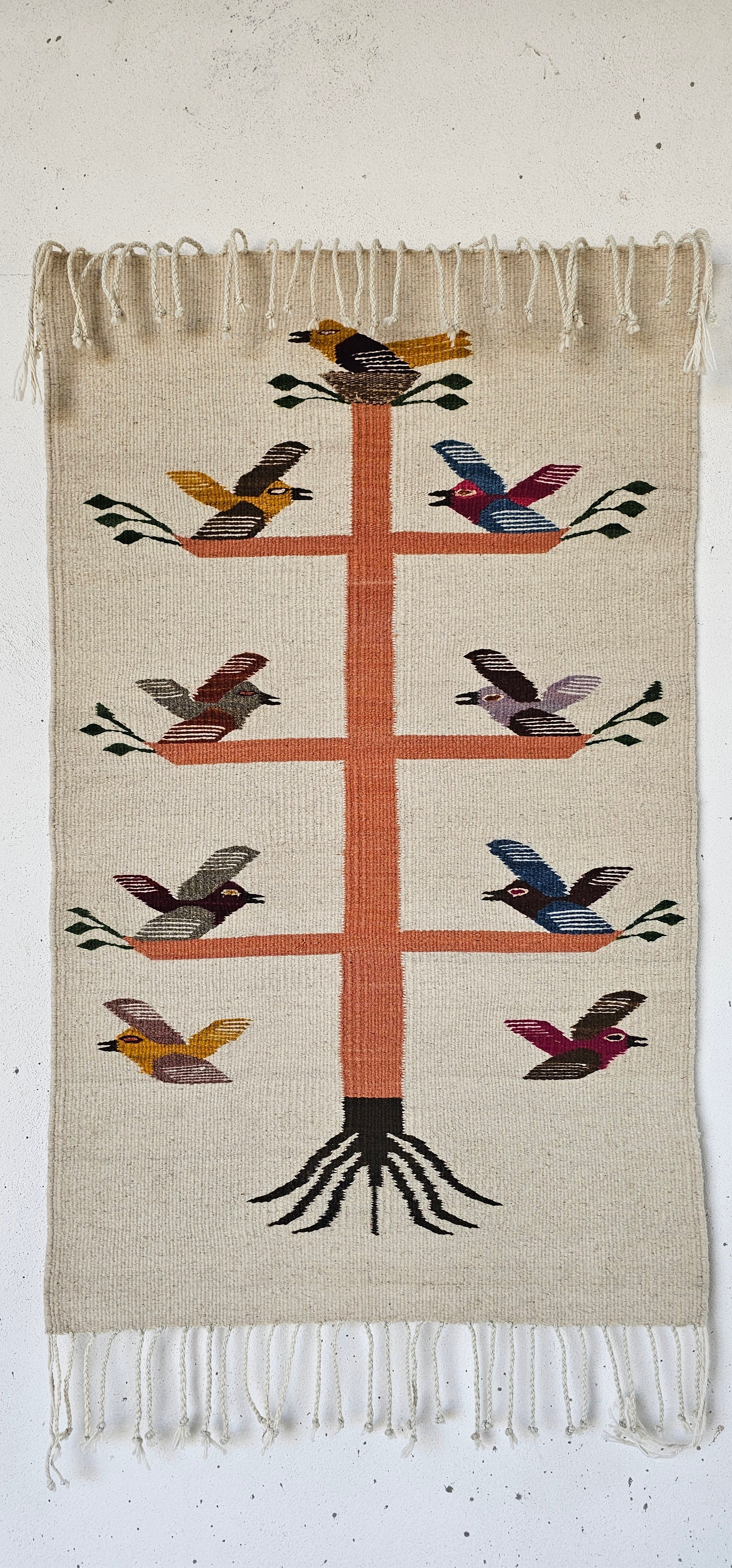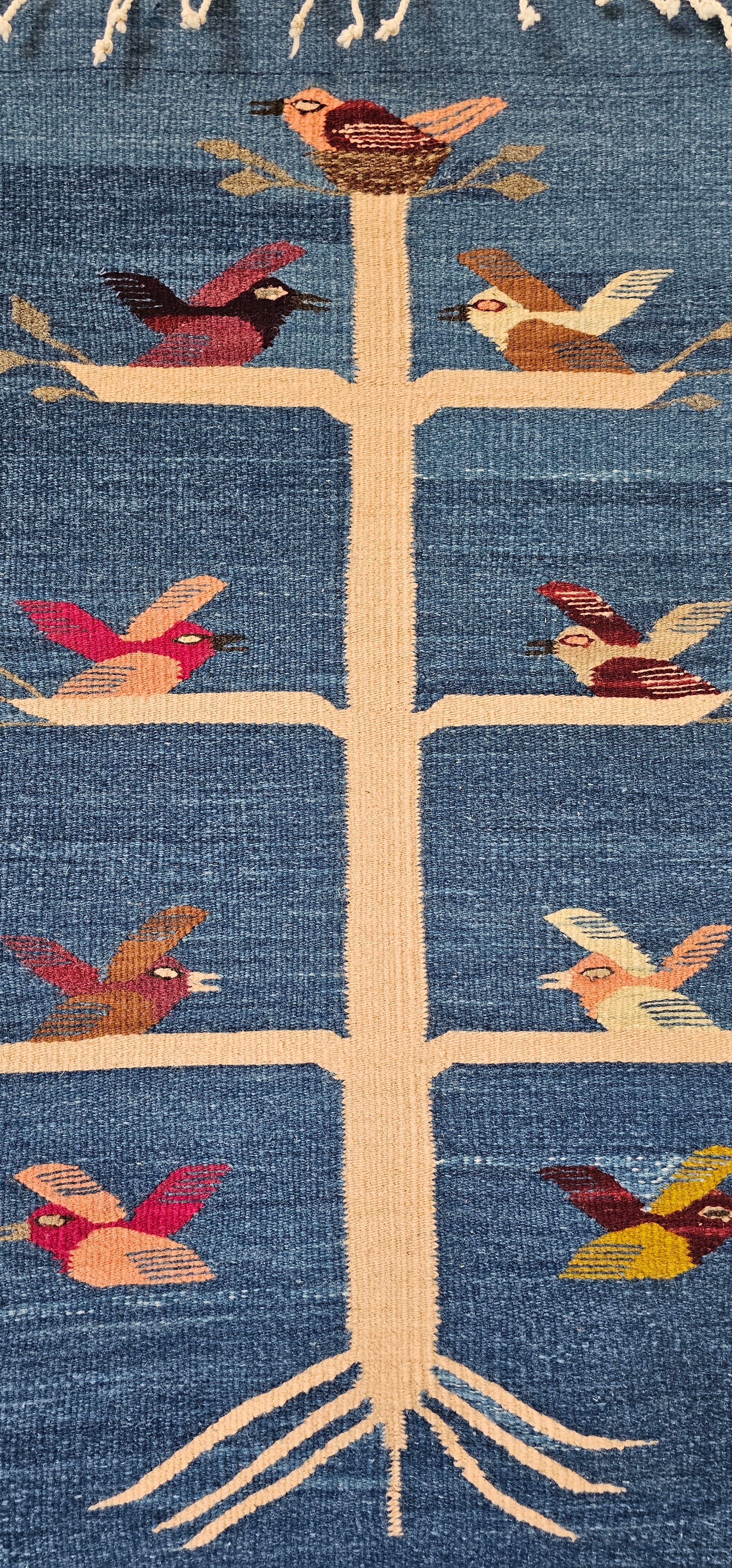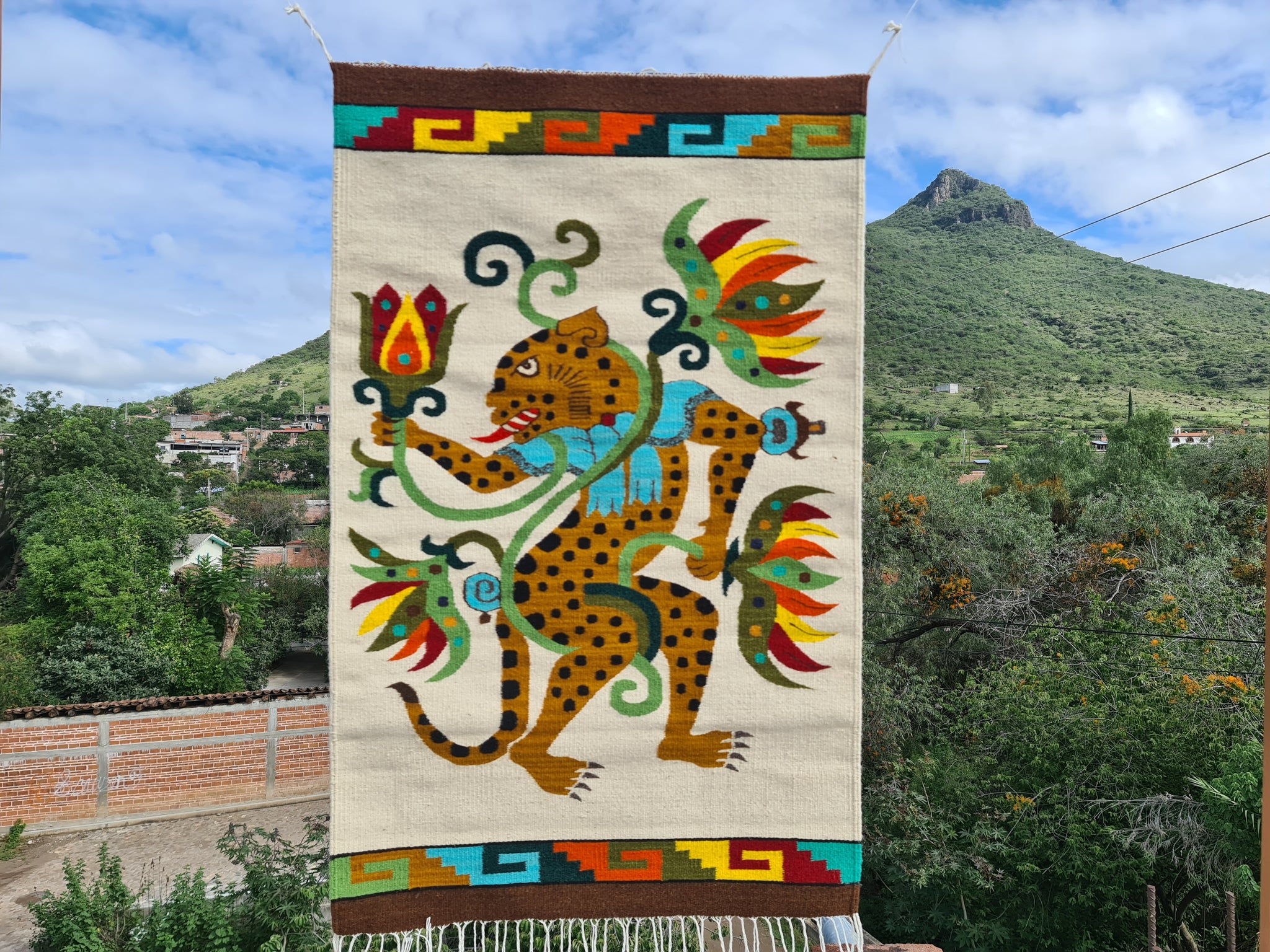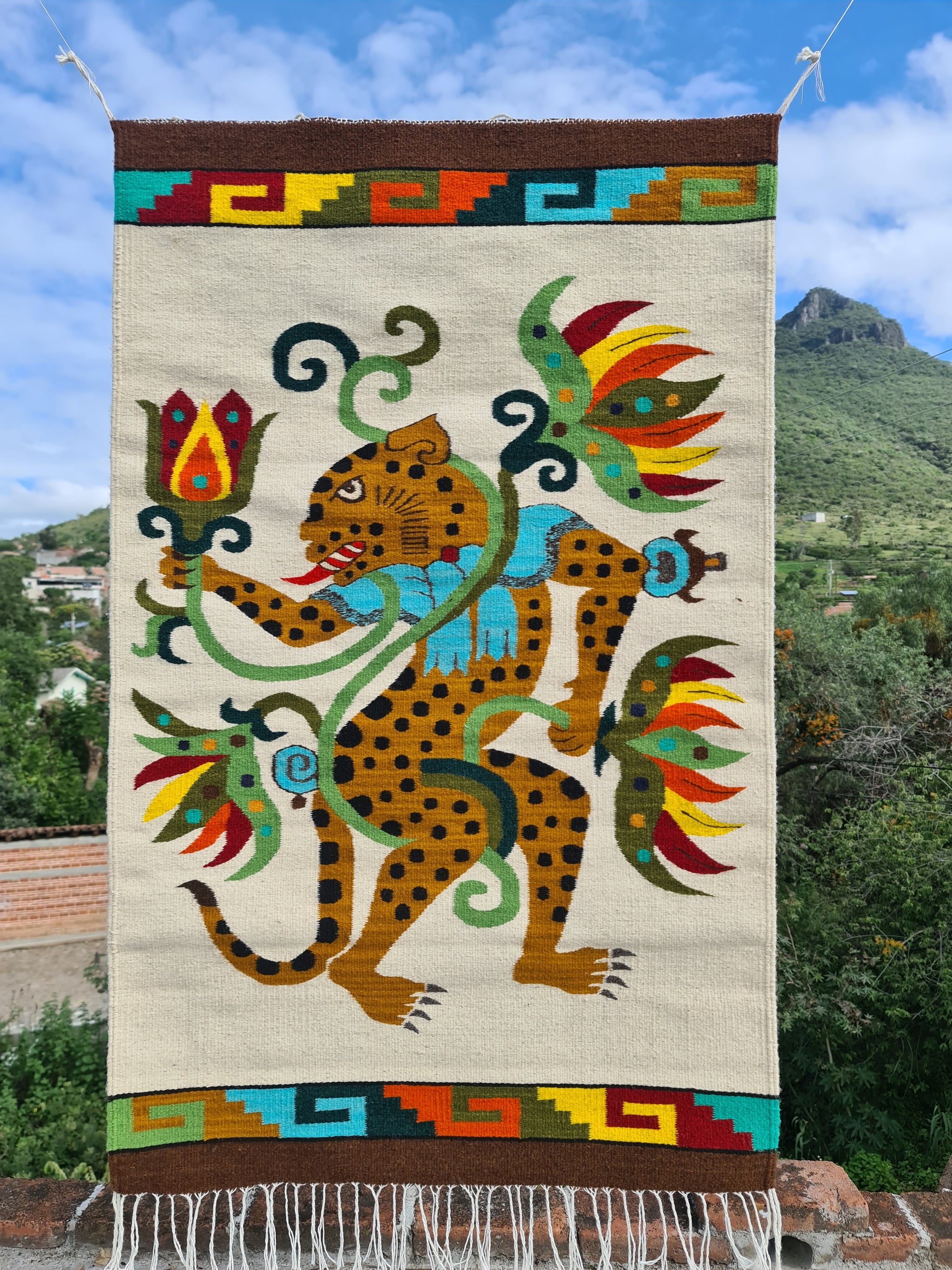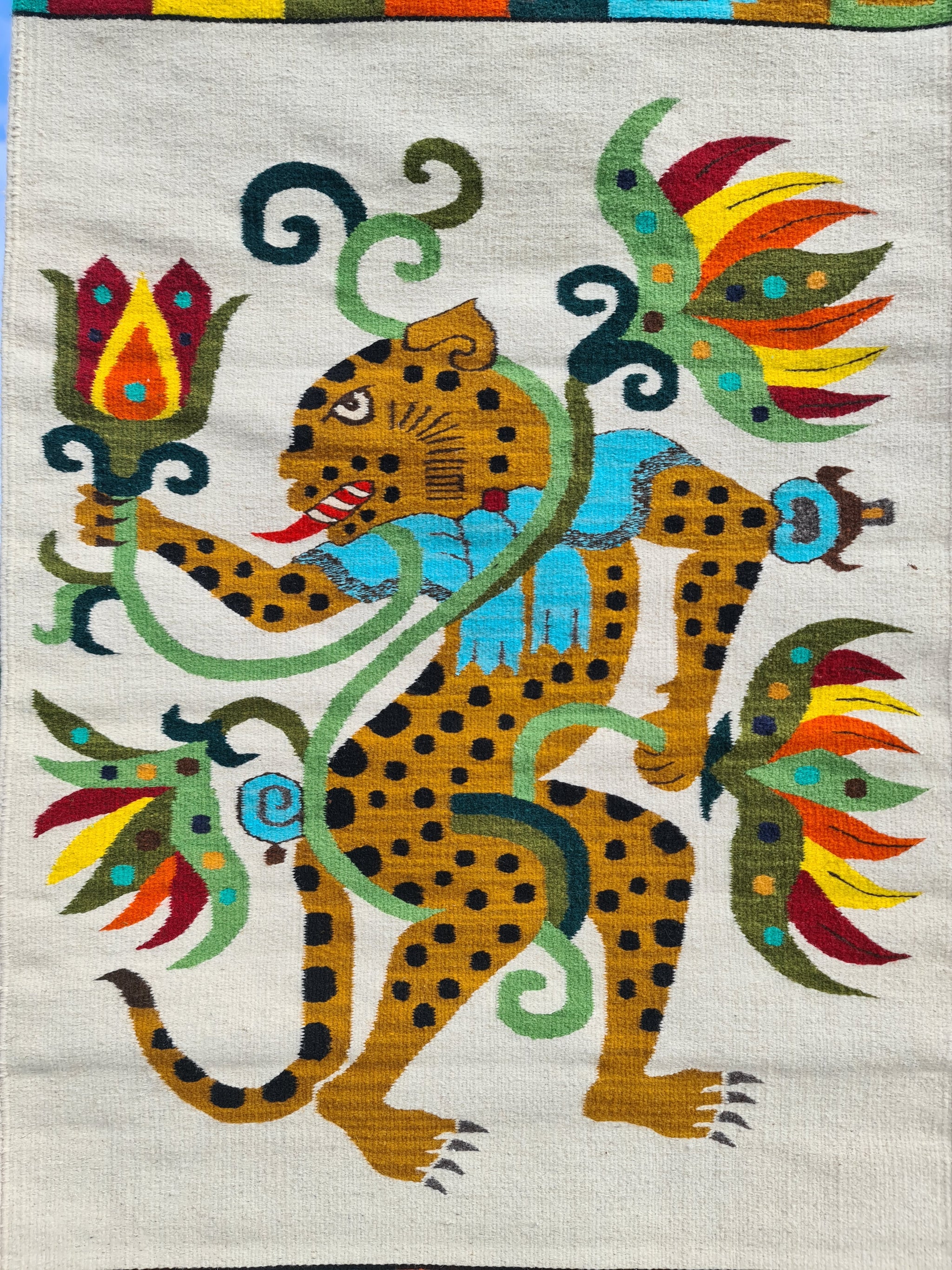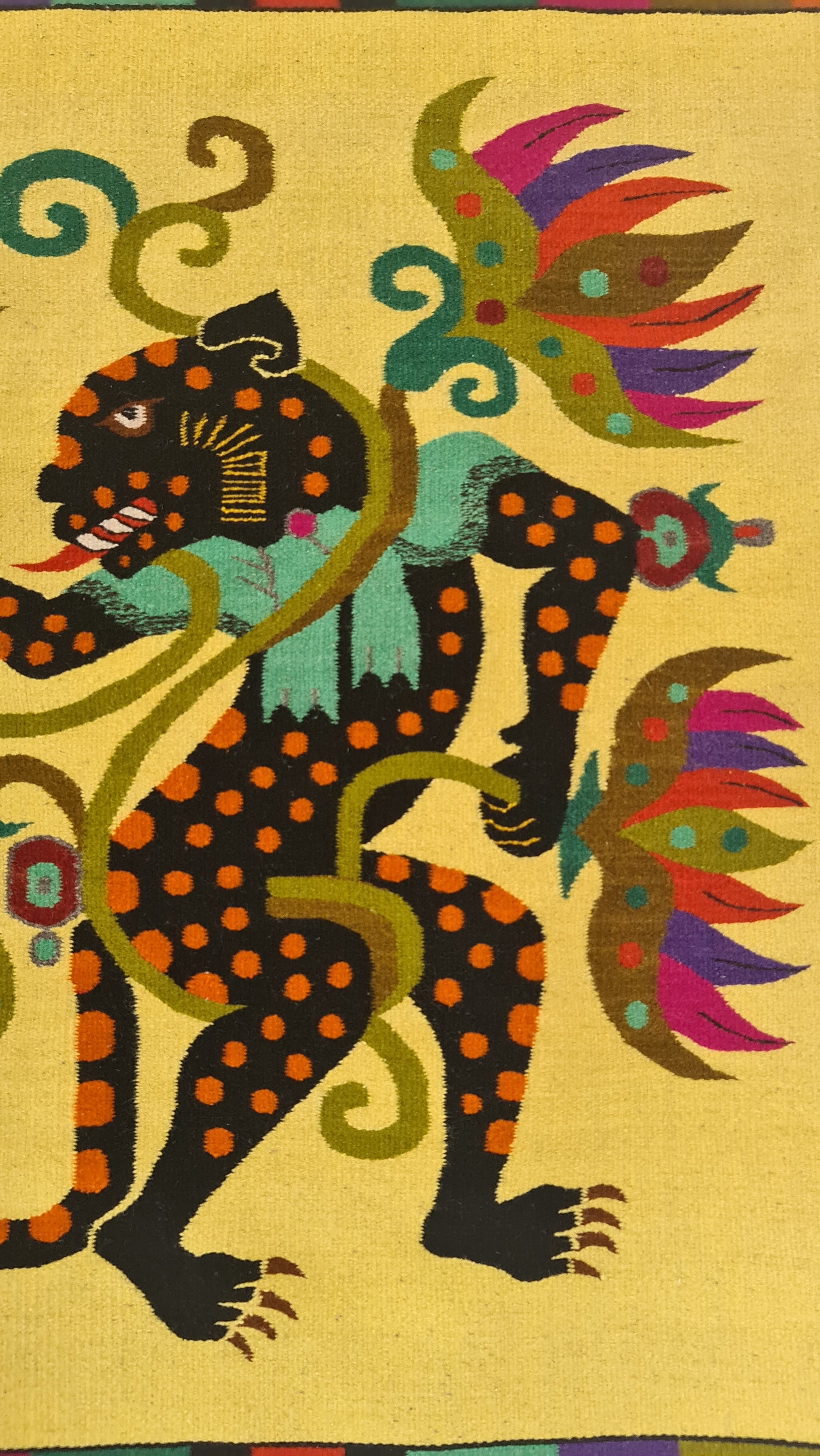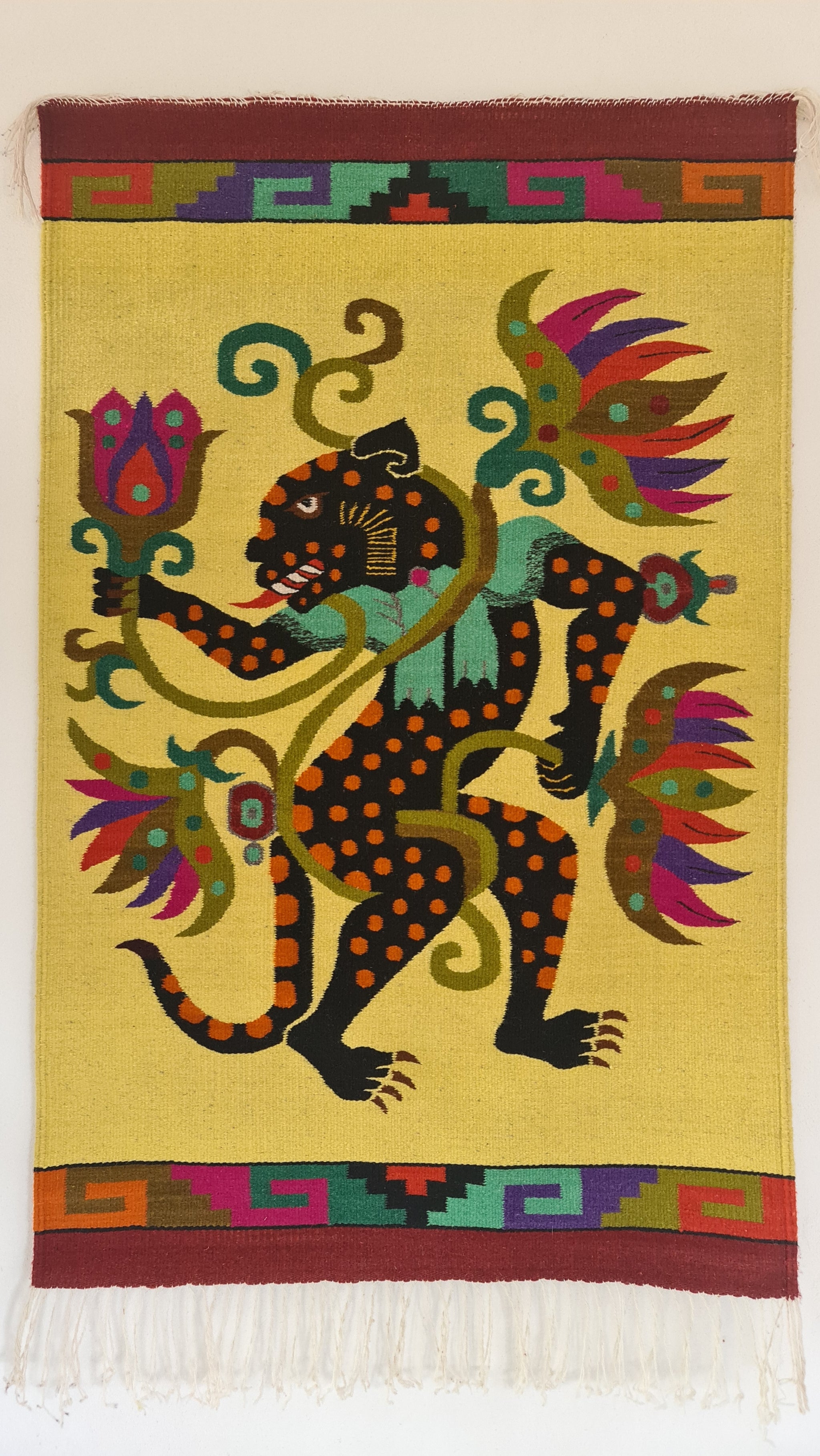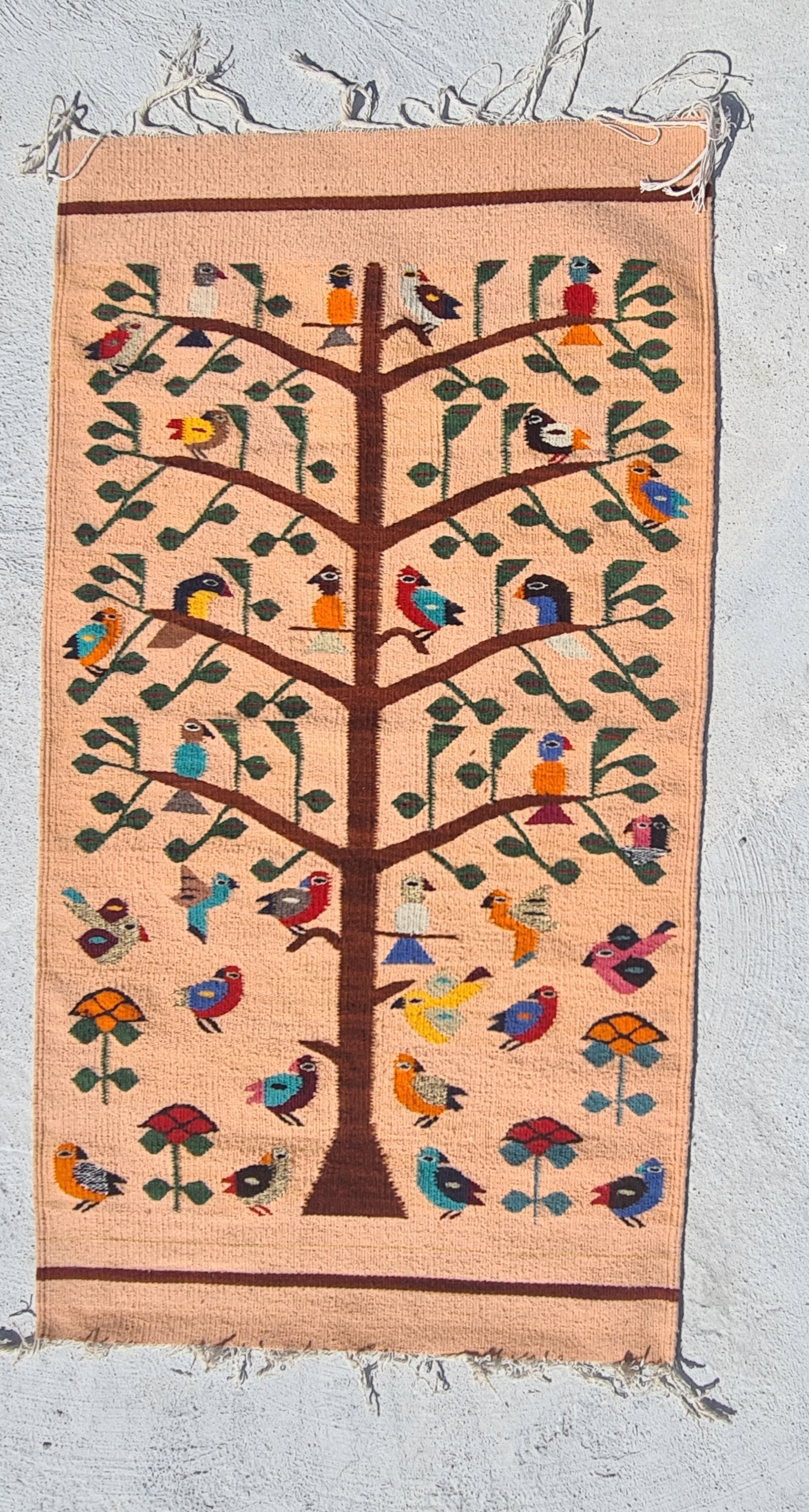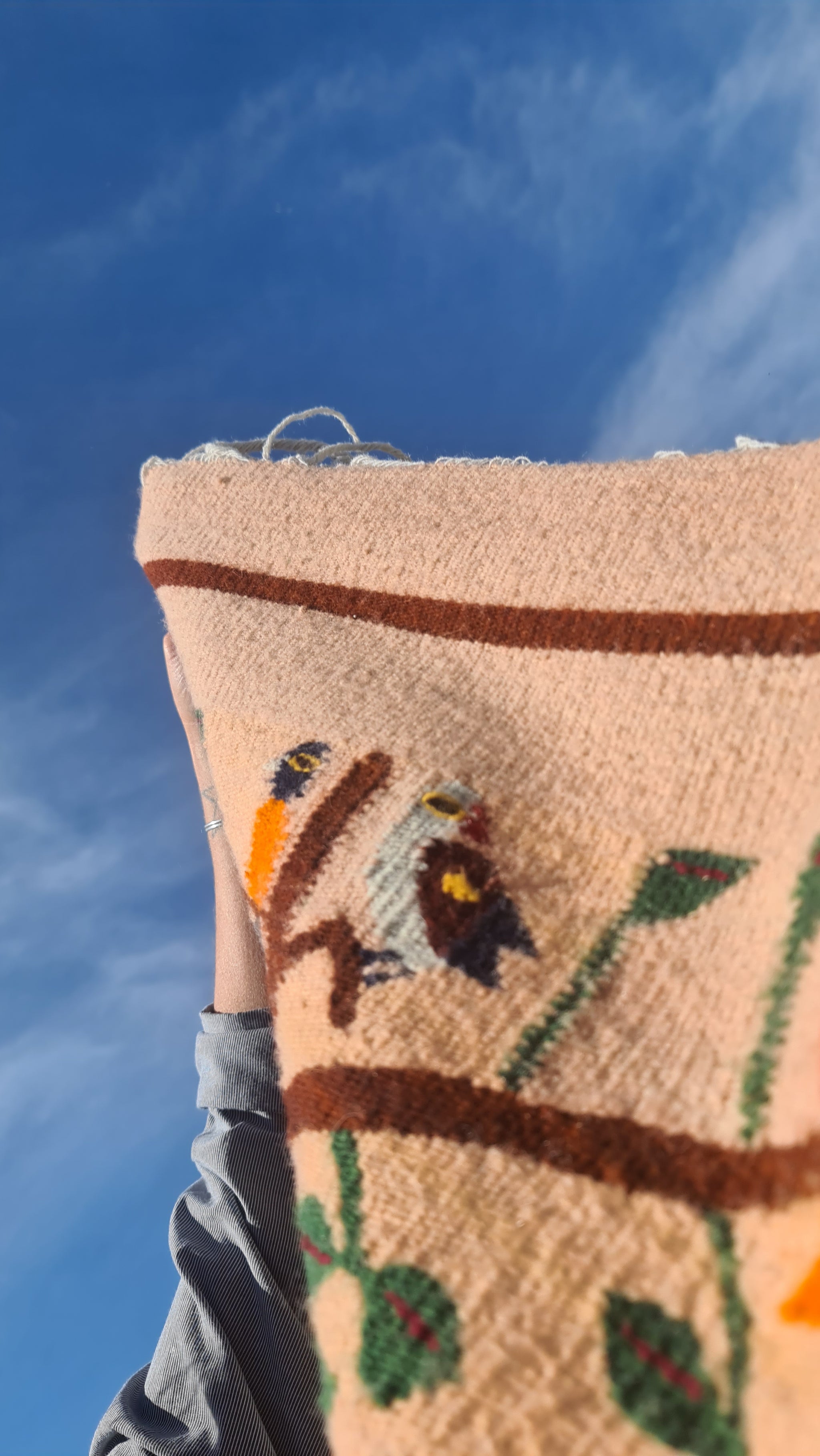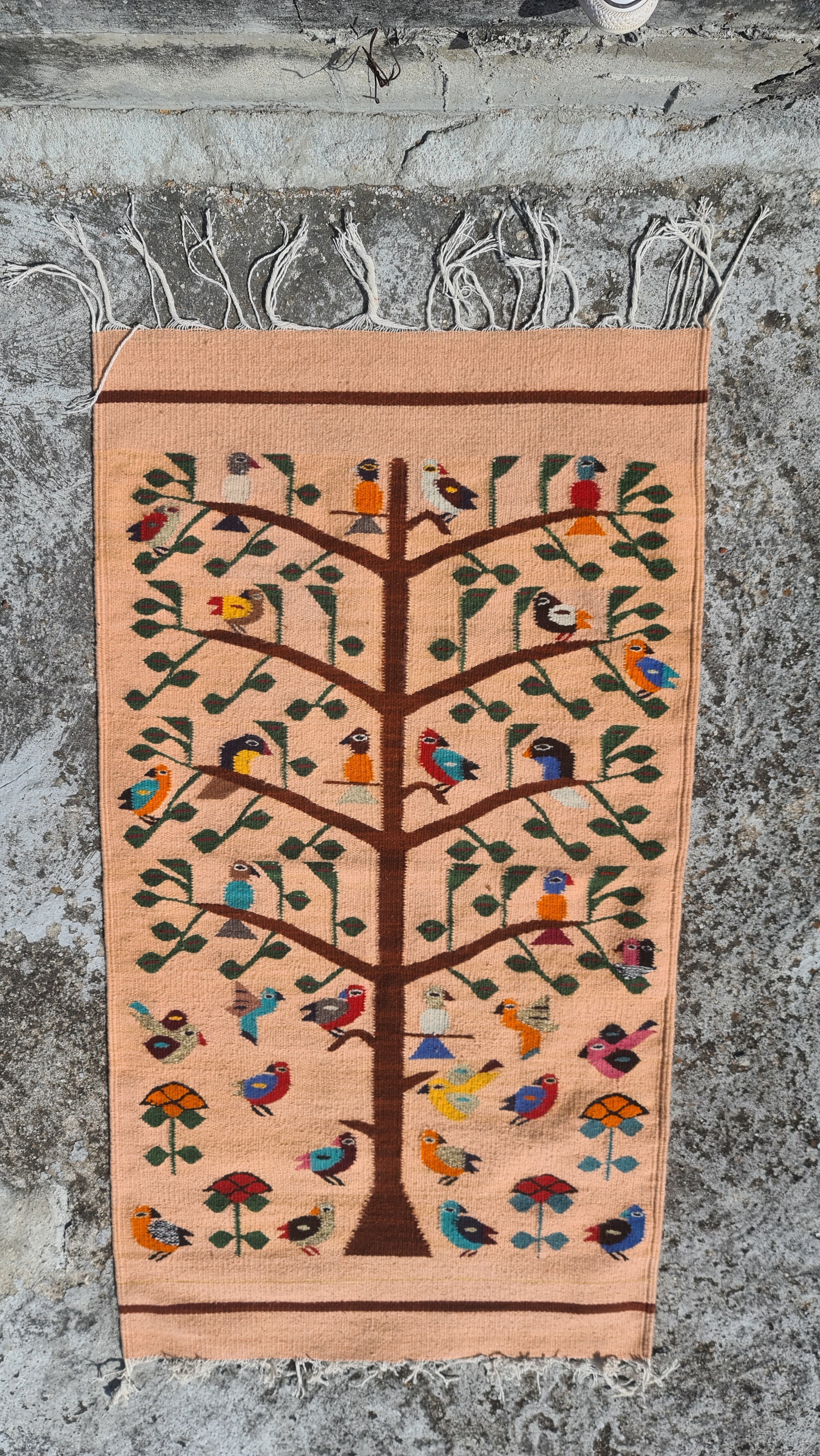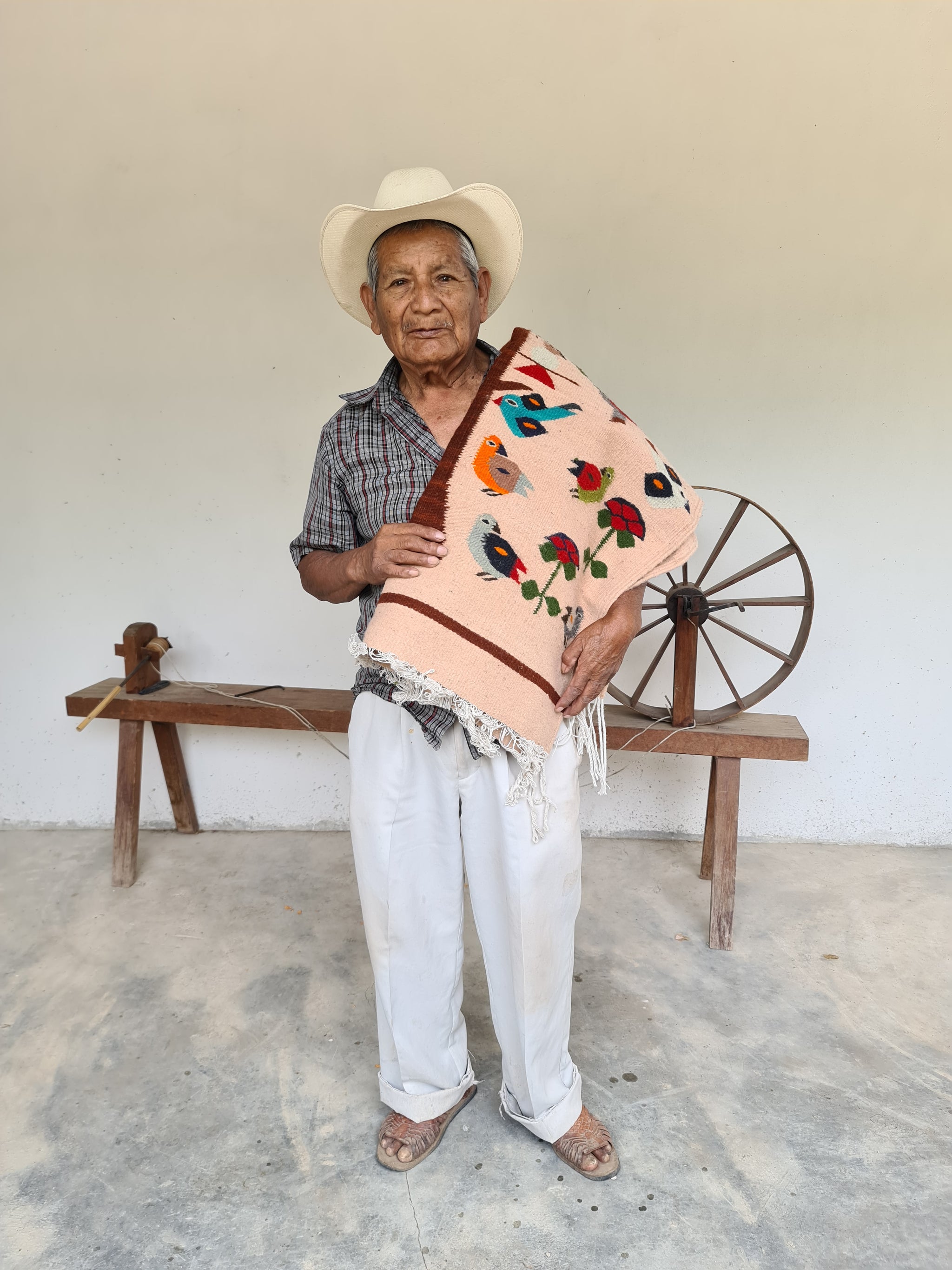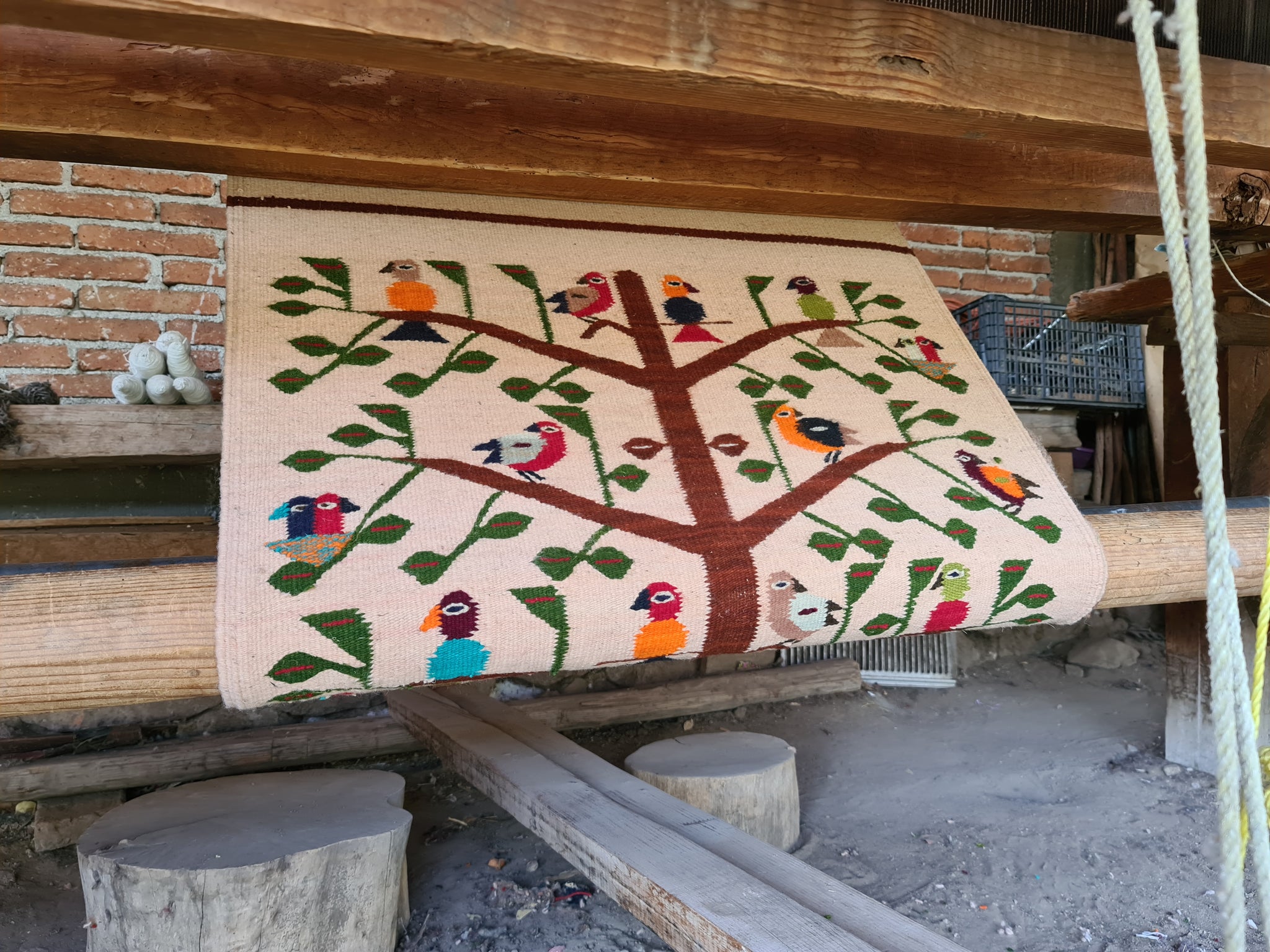Size: 130x97cm; 4.2x3 ft
Weaver: Nereo Gutierrez
Materials and methods: criollo sheep wool hand dyed with natural dyes: Yahutli (tagetes lucida), pecan shells, and an unindentified wild plant for the backgorund. Handwoven on a Zapotec style loom of the 16th century adapted from European styles. Woven using a 7 threads per inch reed and wool rayon blend for warp.
Design patterns and symbols.
This rug was drawn by Nereos dad who is a Master weaver and has been weaving ancient art for a very long time. This particular image of Shaan Gubiísh (Tonatiuh, the sun god) was taken from the Laud Codez, page 14, held at the Boedlian Library collection. The original book has the date 7 hummind bird written along the tree of life that runs along the back of the Sun God, this part has been left out on the weaving for simplicity. We see the Sun God painted in red, because it is dead, probably representing a sunset, it also has an agave thorn in its left hand that represents the penitence needed to attain awareness. In the original book there are other images that depict a pulque offering, along with what seems like a ball for games, the hand of the God itself, and balls of incense. In our stories of creation, the Gods offered themselves in sacrifice for our human existence and in oder to provide for our needs many divine feats and offerings were made so it is expected to return those favours in life. Frank Díaz, in his class about Codex of the Anawak points out to the idea that the perception that the universe being created from the big bang out of nothing is unadmisible from the perspective of our ancient philosophy. Perhaps what our ancestors understood is that before the big bang there was this singularity where all the cosmos was condensed into divine matter that choose to create itself as the universe that we perceive today. The great teachings of our cosmology is that we did not inherit these life, this body or the nature around us for free but was an act of sacrifice fromt the divine and so we must take utmost care of it and always strive to maintin the balance of all the subtle esscences that make life possible.
Unfortunately a lot of the ancient knowledge got lost during the dark ages of the inasion of our lands, our societies achieved a gread development in the arts and sciences but many of those books and libraries were burned to extinction. It is recorded that the big library in Tenochtitlan burned for seven days. These logographic style of writing was used to make the ancient stories be understood across the vast region of the Anawak continent, because there were so many languages spoken along the continent, the image representation of ideas was the pragmatic way of commenting and dicussing the teachings across the many cultures that flourished here; this required that everyone would have been well versed in the cosmological stories and teachings. As descendants of these cultures we are slowly recovering our ancient memory from the remains of the books that were left and the oral stories that could not be destroyed, it is as if the understanding of the cosmos and life would be creating itself again and unfolding in each life experience of each one of us.
